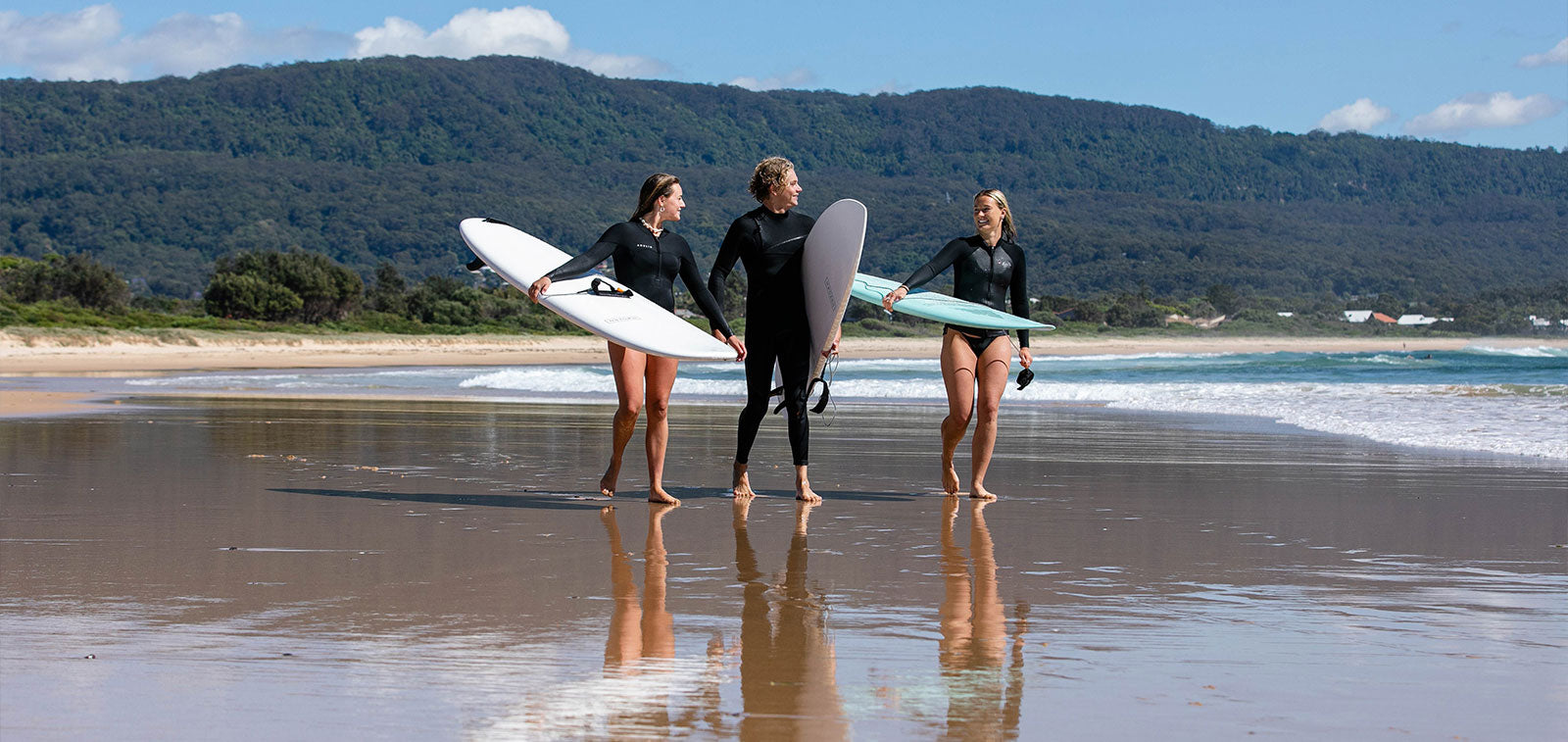
Micro Trend Alert - The deflation of the Inflatable SUP
Share
Why More Paddlers Are Switching to Rigid Stand Up Paddleboards
It’s a big call, but we have seen a noticeable shift in the past year. A steady stream of purchasers are trading up from their inflatable SUPs and moving to rigid stand-up paddleboards. Inflatables exploded in popularity for their convenience, portability and attractive price points. They introduced thousands of people to SUPing - but once paddlers get beyond the first few sessions they start to feel the limitations.
Now we are hearing the same story repeated. Paddlers want a better experience; more glide, more stability and an overall more enjoyable experience on the water. They want equipment that grows with them instead of holding them back. As a result, rigid SUPs are UP.
A Performance Upgrade You Can Feel Immediately
The biggest advantage of a rigid SUP is simple. It performs better. A hard board maintains it’s shape at all times, which means consistent speed, smooth tracking and better responsiveness. There is no flex or sag in the middle of the board. Every paddle stroke turns into forward momentum.
Inflatable SUPs are known for a slight bounce or bend underfoot, especially when the rider is heavier or paddling faster. That flex steals energy and slows the board down. A rigid SUP solves this instantly. Paddlers often say the board feels "alive" and that it responds more naturally to their movement. That boost in glide often keeps people on the water longer because paddling becomes more enjoyable and less tiring.
Stability That Builds Confidence
One of the biggest surprises for paddlers upgrading from inflatables is how much more stable a rigid SUP feels. A hard board does not bulge, twist or deform as you shift your weight. The outline and deck remain true, which creates a predictable balance point. This matters especially in choppy conditions or when carrying gear or a child.
The added stability also helps beginner and intermediate paddlers progress faster. When the board is not fighting against your movements, you feel more connected, more controlled and much more confident.
Long Term Durability
Inflatable SUPs can last several seasons, but they are still inflatable products. They are vulnerable to punctures, seam fatigue, valve wear and gradual air loss. Sun exposure and hot car interiors can shorten their lifespan quickly. Rigid SUPs, on the other hand, are built from durable materials like epoxy, fiberglass, or composite constructions that are designed to last for many years.
For paddlers who want a longer term investment, a rigid board becomes the smarter choice. With basic care and storage, it performs consistently year after year.
Less Setup, More Time on the Water
Simple but important benefits are appealing. No pumping. No deflating. No rolling and packing. A hard board is always ready. Take it to the water and go. For many people with limited time, this convenience is worth the switch all on its own.
A Better Experience for Growing Skills
Inflatable SUPs are excellent for entry-level use. They get people on the water quickly and safely. But once a paddler starts improving, the board often becomes the limiting factor. A rigid SUP helps unlock the next stage of progression. It turns casual outings into smooth, enjoyable sessions where speed, balance and control feel natural - especially if starting to play around in the surf.
Is This the End of the Inflatable SUP?
Probably not. Inflatables still have their place for travel, apartment living and ultra-portable adventures. But we are clearly seeing the rise of paddlers who want more from their time on the water. For them, a rigid SUP is not just an upgrade. It is the start of a whole new paddling experience.
If you have been wondering whether it is time to make the switch, the answer from most paddlers is simple. Once you feel the difference, there is no going back.
CHECK OUT OUR RANGE OF STAND UP PADDLEBOARDS


